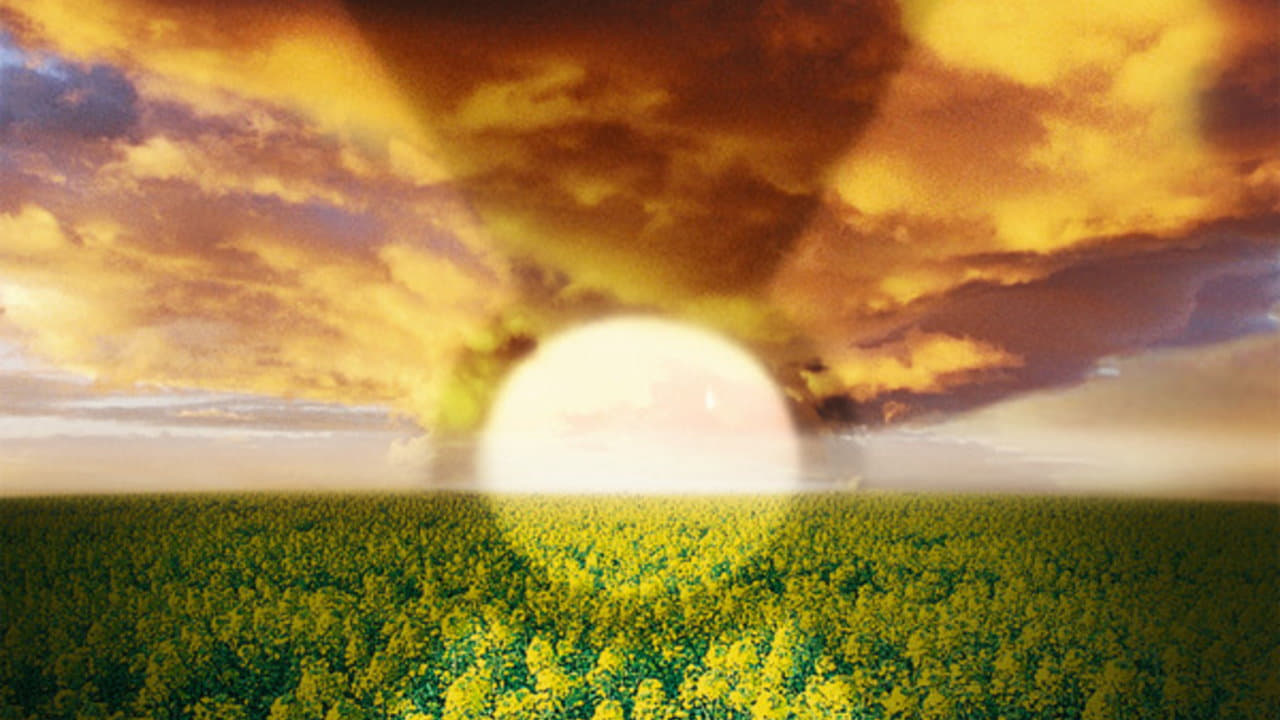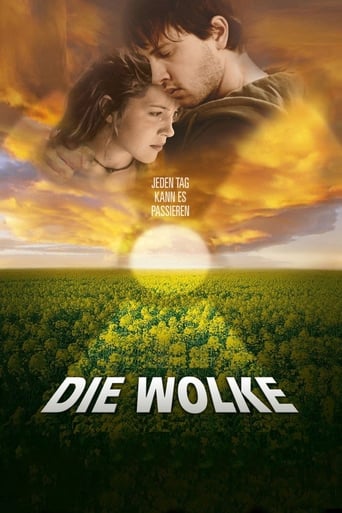

"Die Wolke" or "The Cloud" is a German 105-minute movie from 2006, so this one had its 10th anniversary last year. The director is Gregor Schnitzler and it is certainly one of his best efforts. This is also true about the writer duo here, Ainscough and Kreuzpaintner, who have done worse during their careers, especially the former. These two adapted the novel by Gudrun Pausewang here. This is the story of a teenage girl and what happens when her first love happens at the very same time like a nuclear catastrophe that has an impact on her and all her beloved ones and actually on thousands of people in Germany. This film is not really about telling us that nuclear reactors are bad (even if it still gets the message across), but it is about the fate of individuals concerned by the disaster and the film works very well without big action sequences or (not so) special effects trying to hide the lack of substance as it has been done so so many times in catastrophe movies here in Germany.I may be a bit biased as I have always liked Paula Kalenberg, but for me she is the heart and soul of the movie. It is very easy to cheer for her and her happiness and well-being because of the approach P.K. gives to her character. The script, however, is really good too and works nicely for the most part. They weren't afraid of taking risks like the boy's death that may shock the audience or depict Kalenberg with a bald head that shows however that lack of hair cannot destroy love in a nice metaphorical way. The best (and equally most devastating scene) of the film, however, is the toxic rain sequence. Heartbreaking stuff there. This one was also an 8/10 at least and i would have been way more effective on the big screen too I am sure. I would not say that this is a perfect film and my liking for Kalenberg (especially her face expression in the kissing scenes) may cloud (no pun intended!) my vision a bit here, but I think that eventually it is a very rewarding watch. And even if the future may not be as bright as I want it to be, I am somewhat glad the film ends on a positive, almost uplifting, note. But even besides that, like I already said, this one here shows all the horribly untalented filmmakers when it comes to disaster movies (especially the way mass panic is put on display here) worldwide how it is to be done. Initially, you may think this film is mostly for audiences that are roughly the same age as the central characters, i.e. teenagers, but this would be a very short-minded assumption. It is for everybody who likes quality movies and certainly considerably closer to "great" than to "mediocre". I very much recommend checking it out.
... View MoreWell made movie with good acting and good directing but I was shocked about the content. Just about EVERYTHING this movie shows from start to finish is demonstrably wrong.Some examples:a) in the very first few seconds a voice can be heard telling us how they're powering up a reactor. This supposedly is done within seconds, while in reality going to full power is more like days. Is this important? No, but it sets up the scene for all the BS that follows.b) after the accident happens a couple of kids drive in a car and - this is so cheesy - one after another state - factually wrong - anti- nuclear-talking-lines. Like that after the Harrisburg/ThreeMileIsland accident cancer rates skyrocketed (read Wikipedia on this, 2 additional cancers in the area are not exactly skyrocketing)c) everyone runs away and fears "the cloud". I could not believe my eyes when the movie actually shows a dangerous and dark cloud. WTF !!! There is no reason whatsoever why there should be a visible and dangerous cloud (except for random weather, and in the weather shown this ominous cloud doesn't really fit). But I guess it looks good on screen and is really scary.d) the movie reinforces the (dangerous) stereotype that people suffering from radiation exposure are themselves radiating and therefore dangerous to others! This is for the most part complete and utter BS. Just because you've been exposed you are not a danger to everyone around you and especially not as the movie claims MONTHS after your exposure.e) the movie claims 38.000 people died and EVERYONE in a 5km radius died from radiation. Considering that after several simultaneous meltdowns in Fukushima the death toll from radiation still stands at ZERO... this just doesn't make any sense and is completely disconnected from reality.Watch this movie if you like. It's well made but be aware that it's pure propaganda and has NOTHING at all to do with reality. If you consider yourself a member of the reality-based community you will probably have to puke while watching this if you know anything at all about this topic.
... View MoreFirst of all I would like to say that I loved the movie. When I went to watch this movie I didn't know what to expect, I only knew that it was about an atomic power plant accident in Germany. I think it's a topic that everyone is involved even if they are not living here, where the movie was shot. Even if it might seem closer when you live right next to the place the atomic power plant accident is happening in the movie. The movie is about telling us, that we have to think about the atomic power plants that are all around us, and could destroy our live in such a short time. After the accident happened and Hannah and Elmar find themselves in crowds of people just running around to save their lifes from 'the cloud', the death that no ones sees they have and keep their close love that began right before the accident. They don't have much time to live, they will probably die soon(the movie didn't tell if and how they died) but still there's that strong love between them that helps them get through it. They might even have lived a better life then people that live for 80 years and haven't had the luck to have such strong feelings. In my eyes the movie was really sad. Probably the saddest movie I have seen so far. Franz and Paula who played Hannah and Elmar did a great job. Very passionate and believable.
... View MoreThe long-awaited film adaptation of Gudrun Pausewang's 1988 bestseller, lives up to readers and critics expectations alike. As in the novel, the teenaged protagonists take centre-stage in the cautionary antinuclear tale. The focus remains so fixedly on our young heroine and her troubled beau, that, were it not for the occasional shot of the brooding dark cloud moving at breakneck pace across the idyllic German countryside, we would likely forget the nuclear catastrophe, and relegate it to the position of initiator of events, rather than overriding drama.The film's sentimentality is given carte blanche, as teenage angst is substituted and validated with abstract and scientifically incorrect fears and assertions about the safety of atomic energy. Being put on par with national if not global energy policy, the horror-drama of the characters situations forces our sympathy, and by the end of the film, we find our selves wanting to scream out: "It would have all worked out, were it not for those dratted power plants!" Not to deny that nuclear catastrophes have an individual human cost, but they also have a mass human cost, a catastrophe can only be shown to be such, when the universalising magnitude of its scale is shown. "Die Wolke", gives us a gaggle of teenagers with whom we identify no more than any other group of acne-poppers whose fragile lives are thrown out of balance on Sunday afternoon television.Viewers cold, utilitarian, opinions are countered with a brand of Dickensian humanism with an agenda. The film is prefaced in many cinemas with a reductionist piece of sensationalism, namely advertising by Greenpeace. Greenpeace are an action group, yes, but Greenpeace energy is a privately owned energy provider. This introduction leaves a bitter taste in the viewers mouth that does not abate, but tends to get surge up again, whenever the films characters utter one of their newly wise energy policy statements "Nuclear energy, we should have got rid of it years ago!" "And switched to Greenpeace," was all that was ringing in this critics ears.In Regensburg' s Ostentor Cinema, a Q and A session (heavily focusing on the A) was held after the film. Invited were a political figure, a doctor specialising in catastrophe medicine, the organiser of the Evangelisches Bildungswerk and a judge turned politico. While they all agreed the film lacked scientific consultation, they all proceeded to use it as a platform to float their differing opinions. The panicked audience rattled off questions as to what they were to do in case of nuclear catastrophe, "The opposite of what they do in the film!" was the popular response. While increased cancer rates were shown in the following years, only two people died from the direct explosion and radiation in Tschernobyl. The majority of the deaths among those 30- 40,000 expected to die following a nuclear catastrophe result from unrest in the fleeing population.If panic is the overriding sentiment following a change in nuclear policy, such as might be produced by a major meltdown in the reactor of power plant, then it is no great leap to assume that panic is also the overriding sentiment in the depiction of nuclear energy in film.
... View More